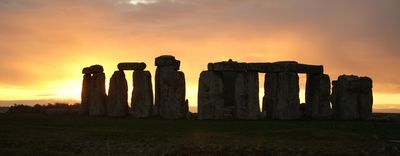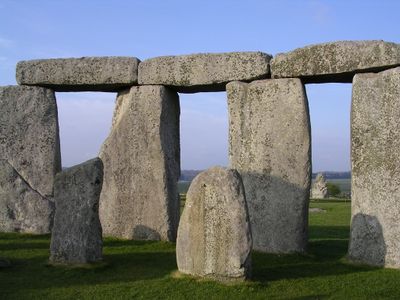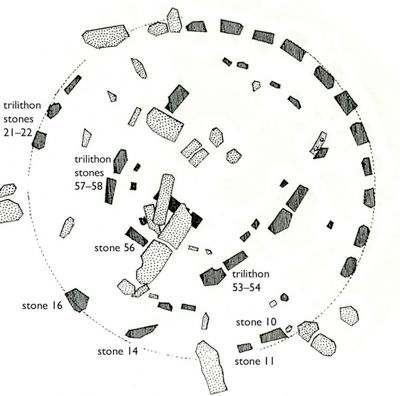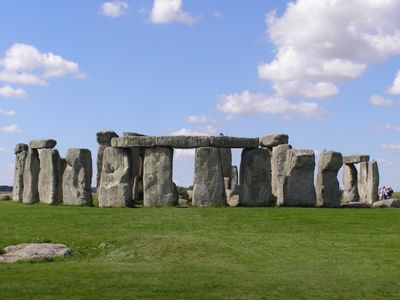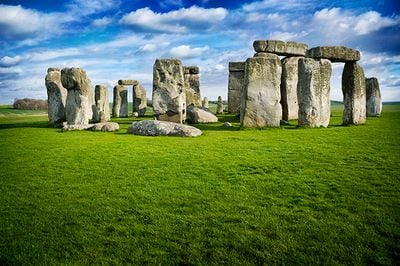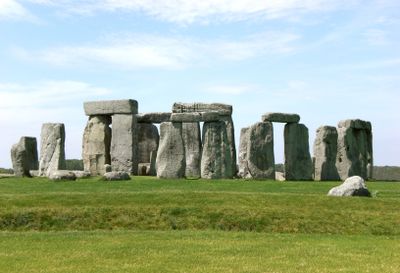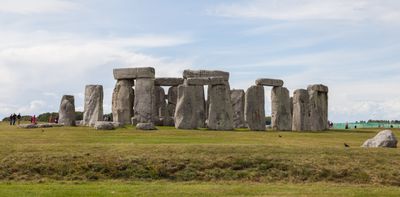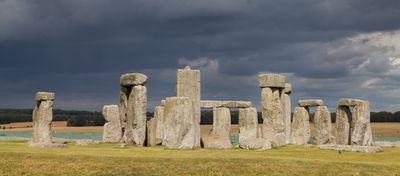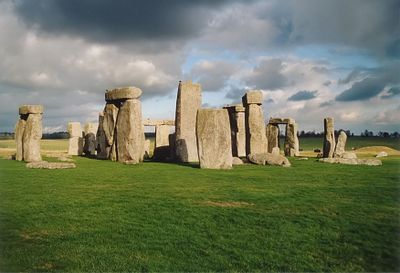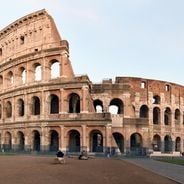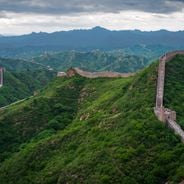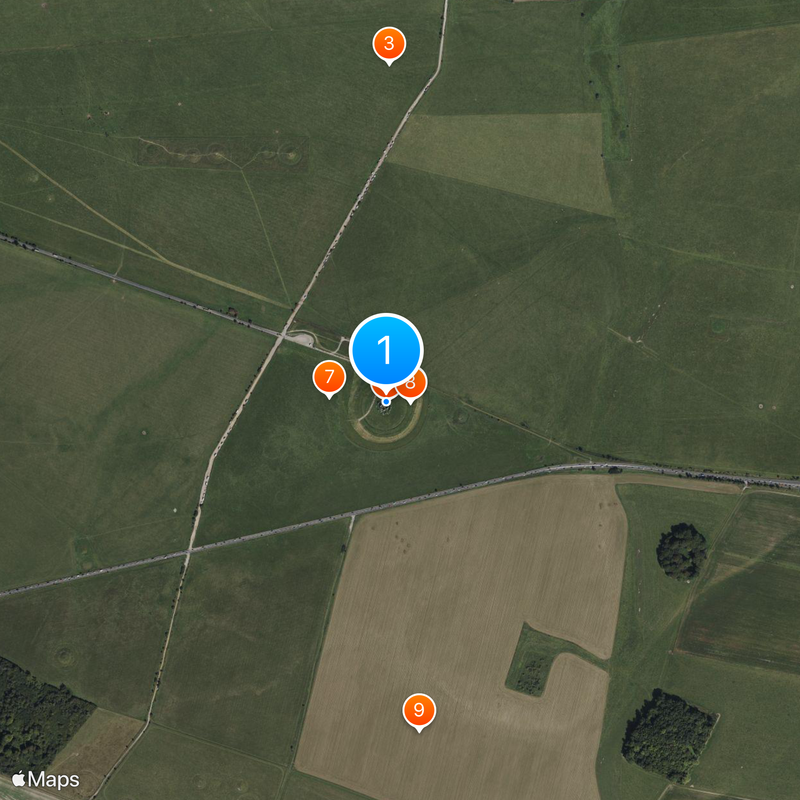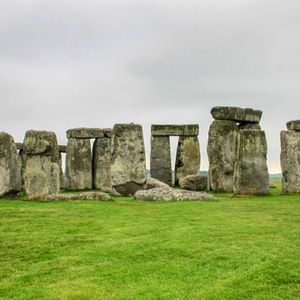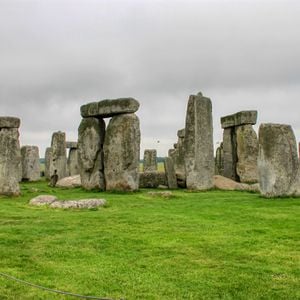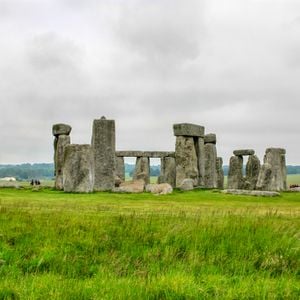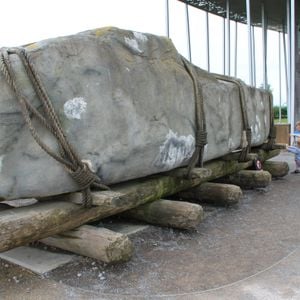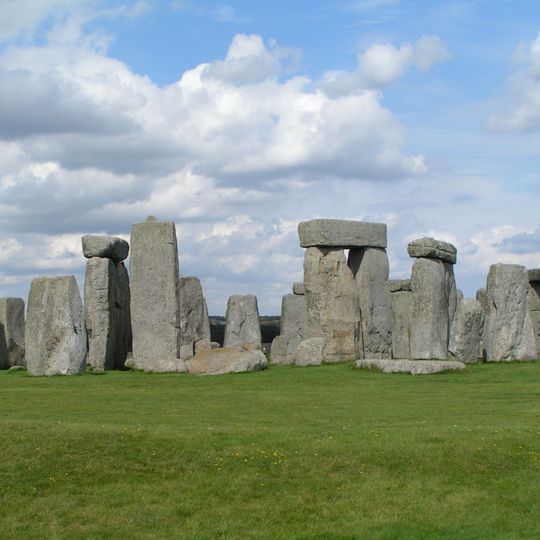
Stonehenge, Prehistoric stone circle in Wiltshire, England
A ring of standing sarsen stones forms the outer circle, each reaching around 4 meters in height and weighing roughly 25 tons, capped by horizontal lintels. Smaller bluestones arranged in a horseshoe formation occupy the interior space, creating a second layer within the larger structure.
Construction began around 3100 BC during the Neolithic period and progressed through several phases until roughly 1600 BC. The earliest phase involved a circular ditch and bank enclosure, while the large stones were erected in later centuries.
The alignment with summer solstice sunrise and winter solstice sunset suggests that earlier communities used this place for watching the sky and marking seasonal moments. Modern Druids and neopagans still gather here during solstice celebrations, honoring those ancient practices with rituals and communal observances.
The place operates from Monday through Sunday between 09:30 and 19:00, with admission fees required, and wheelchair accessible facilities are available. A shuttle bus connects the visitor center to the monument, and advance booking is recommended especially during summer months.
The smaller bluestones came from the Preseli Hills in Wales and were transported roughly 240 kilometers to the Salisbury Plain. Researchers continue debating whether human effort or glaciers moved these stones across such distances.
Location: Amesbury
Inception: 30 century BCE
Architectural style: prehistoric Britain
Diameter: 104 m
Accessibility: Accessible en fauteuil roulant
Fee: Yes
Made from material: sarsen, bluestone
Address: Salisbury SP4 7DE, UK
Opening Hours: Lundi-Dimanche 09:30-19:00
Phone: +448703331181
Website: https://english-heritage.org.uk/visit/places/stonehenge
GPS coordinates: 51.17889,-1.82611
Latest update: December 14, 2025 19:30
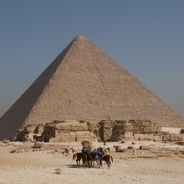
These archaeological sites document the development of human civilizations across thousands of years. They range from the earliest known temple structures like Göbekli Tepe in Turkey, dated to around 9500 BCE, to the preserved remains of Pompeii, frozen in time by a volcanic eruption in 79 CE. Each...

Europe brings together signs of the past that tell thousands of years of human history. From Greek temples on the Acropolis in Athens to Roman arenas at the Colosseum, from the stone structures of Stonehenge to Renaissance palaces, each era has left buildings that still speak today. These sites help...
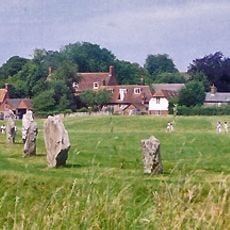
Stonehenge, Avebury and Associated Sites
58 m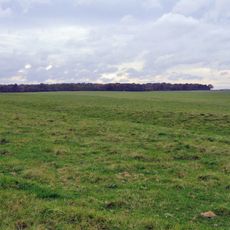
Stonehenge Cursus
792 m
Heelstone
0 m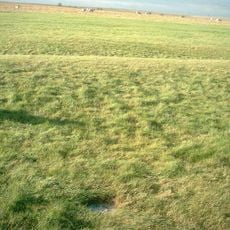
Aubrey holes
45 m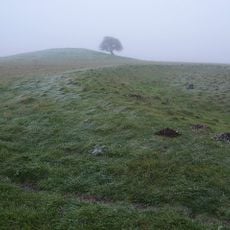
Bush Barrow
771 m
Stonehenge Landscape
132 m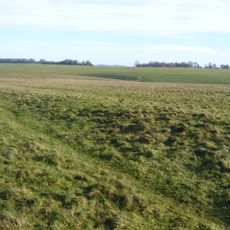
Stonehenge Avenue
58 m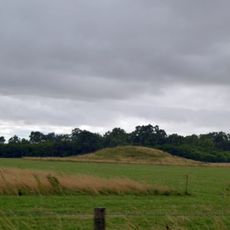
Normanton Down Barrows
771 m
Altar Stone
13 mDisc barrow 220m south west of Stonehenge forming part of a round barrow cemetery on Stonehenge Down
321 m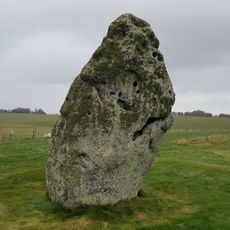
Milestone Opposite Stonehenge
77 m
Stonehenge and Associated Monuments
47 mThree bowl barrows 150m south of the A303, north of Luxenborough Plantation
786 m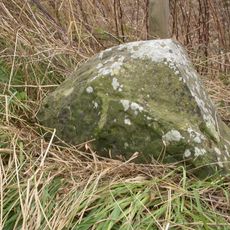
Milestone
238 mFive bowl barrows forming the greater part of a round barrow cemetery 200m south west of Stonehenge on Stonehenge Down
242 mBowl barrow 300m WSW of Stonehenge, forming part of a round barrow cemetery on Stonehenge Down
382 mLong barrow 250m north of Normanton Gorse
837 mBowl barrow 650m SSE of Stonehenge
744 mBowl barrow 500m WNW of New King Barrows north of the A303
740 mBell barrow 100m east of Stonehenge immediately south of the A344
175 mA twin bell barrow and a bell barrow forming the eastern part of The Cursus round barrow cemetery
639 mBowl barrow 230m west of Stonehenge forming part of a round barrow cemetery on Stonehenge Down
317 mThree bowl barrows immediately north of the A303 on Stonehenge Down
786 mStation Stones
34 mBowl barrow 400m west of New King Barrows
795 mA bowl barrow and three bell barrows forming part of The Cursus round barrow cemetery
749 mStonehenge see for free
285 mStonehenge paid route
284 mReal people, real opinions — but not verified.
Visited this place? Tap the stars to rate it and share your experience / photos with the community! Try now! You can cancel it anytime.
A must-visit for lovers of old stones. There's a special atmosphere that lingers when visiting this place!
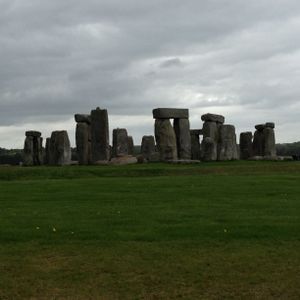
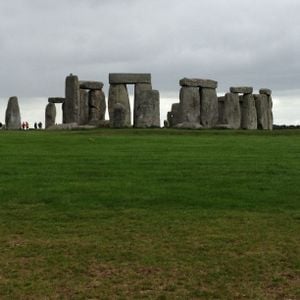
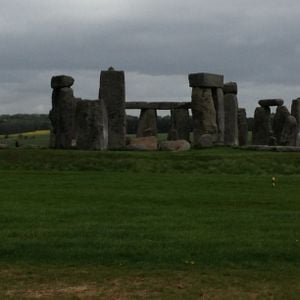
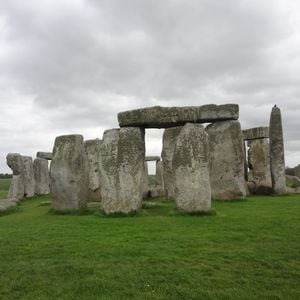
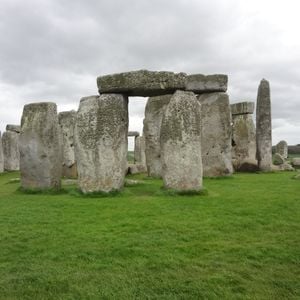
Discover hidden gems everywhere you go!
From secret cafés to breathtaking viewpoints, skip the crowded tourist spots and find places that match your style. Our app makes it easy with voice search, smart filtering, route optimization, and insider tips from travelers worldwide. Download now for the complete mobile experience.

A unique approach to discovering new places❞
— Le Figaro
All the places worth exploring❞
— France Info
A tailor-made excursion in just a few clicks❞
— 20 Minutes


